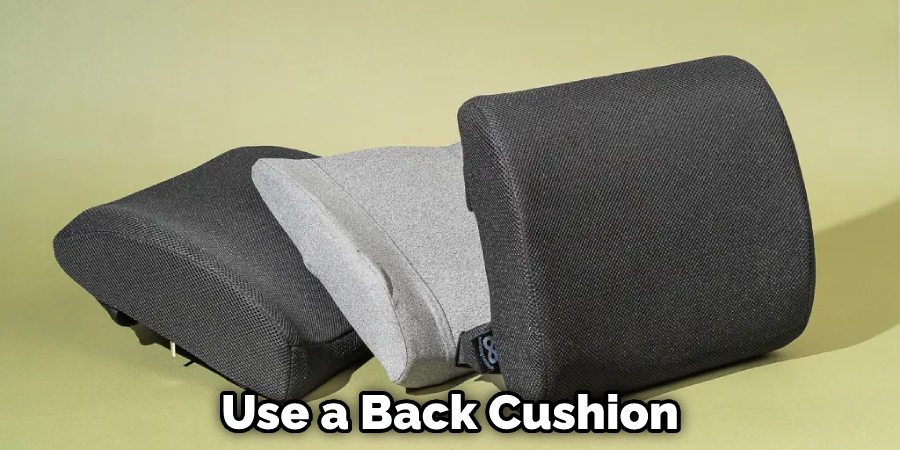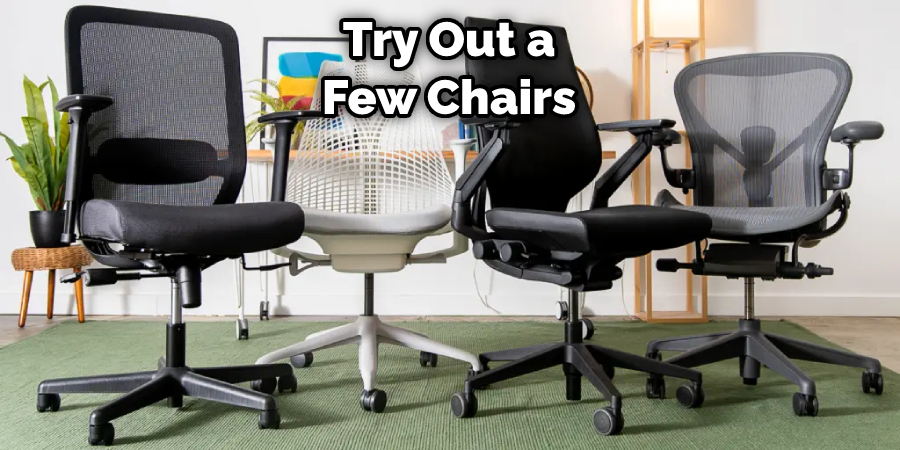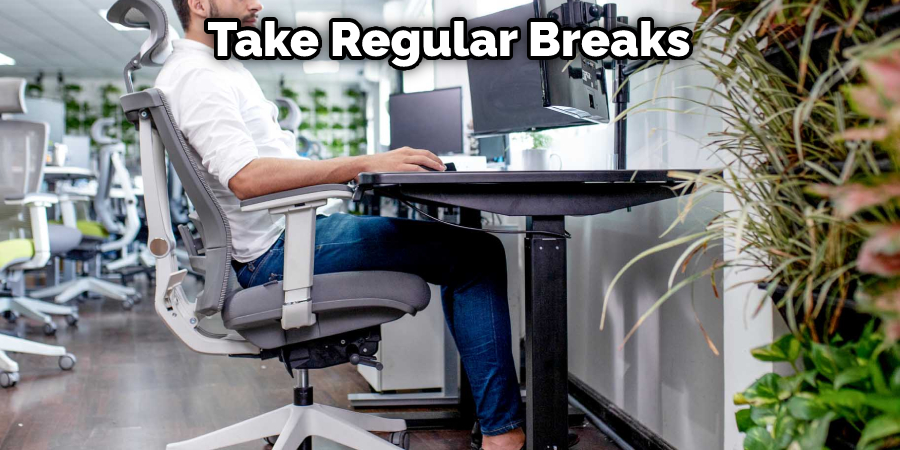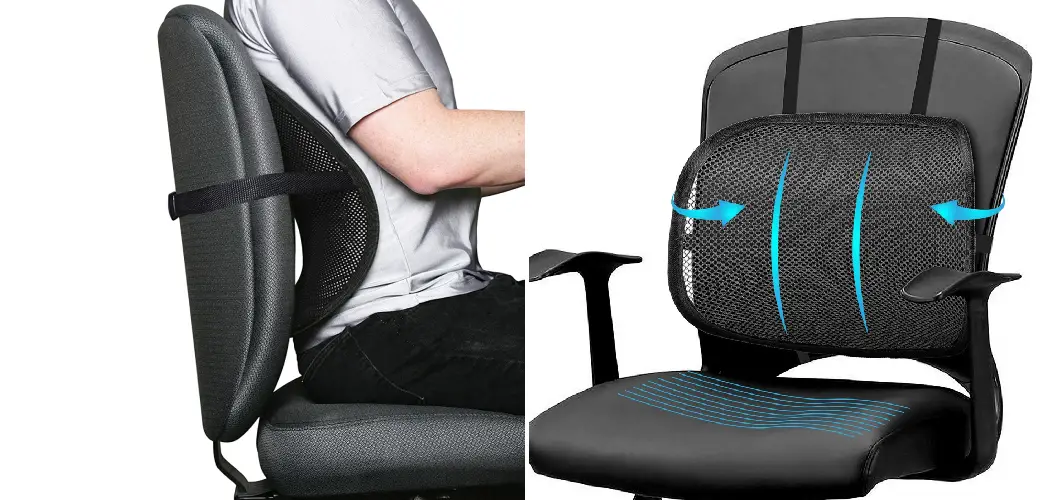Sitting at a desk for long hours can be tough on your back. You might not even realize how much strain you are putting on your spine until you start feeling pain. A lumbar support cushion can help to alleviate that pain and make sitting more comfortable.

In this blog post, we will discuss how to use lumbar support in office chair and give you tips on how to choose the best lumbar support for you. We will also teach you how to use it correctly in order to get the most out of it. So, if you are looking for ways to improve your comfort while working, keep reading!
How Should I Sit to Avoid Lumbar Pain?
The best way to use lumbar support in an office chair is to sit with your spine in a neutral position. This means that your hips and shoulders should be level, and you should keep your back straight rather than slumping over.
You can adjust the height of the lumbar support pillow so that it provides better contact with the curve of your lower back. If possible, try to keep both feet flat on the floor for proper posture.
10 Methods How to Use Lumbar Support in Office Chair
1. Sit up Straight
One of the best ways to use lumbar support is to sit up straight in your chair. This may seem like an obvious suggestion, but it’s one that is often overlooked. Slouching in your chair can put unnecessary strain on your back, so make sure to sit up nice and tall.
If you need to, use a back cushion or lumbar support pillow to help you maintain the correct posture. Make sure your feet are firmly planted on the floor and that your elbows are bent at a 90-degree angle.

2. Use a Pillow
If your chair doesn’t have built-in lumbar support, you can use a small pillow to provide extra support for your lower back. Just place the pillow behind your lower back and adjust it until you feel comfortable.
If you find that the pillow is too big or too small, then try using a different size pillow or even a rolled-up towel. While this method may not provide the support of built-in lumbar support, it can still be beneficial for reducing back pain.
3. Adjust the Height of Your Chair
Another way to use lumbar support is to adjust the height of your chair so that your feet are flat on the ground and your knees are at a 90-degree angle.
This will help to take the strain off of your back and improve your posture. Try to avoid sitting too low or too high, as this can cause strain on your spine. Although you might feel more comfortable in a higher chair, it’s important to make sure that you are not straining your back by sitting too high.
4. Adjust the Tilt of Your Chair
In addition to adjusting the height of your chair, you can also adjust the tilt. This means that you can lean back slightly in your chair while still keeping your feet on the ground and your knees at a 90-degree angle.
This position will help to take even more pressure off of your back. However, make sure not to lean too far back, as this can cause you to slouch, which can put a strain on your spine. Make sure to keep your back straight and use the lumbar support to help you maintain that position.
5. Use a Footrest
If you find that you are constantly slouching in your chair, try using a footrest. This will elevate your feet and help to keep your legs at a 90-degree angle, which will reduce the strain on your back.
Although footrests are often used in office chairs, you can also purchase one separately if your chair doesn’t come with one. If you don’t have a footrest, you can try using a stack of books to keep your feet elevated.

6. Get up and Move around Regularly
One of the best ways to reduce back pain is to get up and move around regularly. Sitting in one position for too long can cause stiffness and pain, so make sure to take breaks throughout the day to walk around and stretch your muscles. While you’re up, you can also use the lumbar support in your chair to help you maintain the correct posture.
7. Stretch Your Back Muscles
Stretching your back muscles can help to improve posture and reduce pain. There are several stretching exercises that you can do throughout the day to loosen up your back muscles and provide lumbar support.
If you’re unsure of what exercises to do, there are plenty of online tutorials that you can follow. Make sure to listen to your body and stop if you feel any pain or discomfort.
8. Check Your Chair’s Posture Support Features
Many office chairs have built-in lumbar support features, such as adjustable arms or a contoured seatback. Make sure to take advantage of these features by adjusting them until they fit your body comfortably.
Although these features may not be enough to provide you with the full support that you need, they can still help to reduce back pain and improve your posture. However, if your chair doesn’t have these features, you can always use the other methods listed above.
9. Invest in an Ergonomic Office Chair
If you don’t already have one, consider investing in an ergonomic office chair with built-in lumbar support. This type of chair will promote good posture and reduce stress on your lower back.
If you’re able to, try out a few chairs before you buy one so that you can find the one that fits your body and provides the best lumbar support. Try to find a chair with adjustable arms and height, as this will make it easier to find the right position for your body.

10. See a Physiotherapist
If you’re still having trouble finding the right lumbar support, consider seeing a physiotherapist for a more comprehensive solution. A physiotherapist can provide an individualized program to help improve your posture and reduce pain in your back. If your pain persists, they can also provide you with further advice or refer you to a specialist.
Remember, it’s important to take the necessary steps to protect your back and maintain good posture, as this can help to avoid future problems. Take the time to adjust your chair and use lumbar support features so that you can sit comfortably throughout the day. If all else fails, don’t hesitate to seek professional advice from a physiotherapist.
Things to Consider When Using Lumbar Support in Office Chair
1. Find the Right Position:
Make sure to adjust your chair and use lumbar support features so that you can find the right position for your body type. Make sure the lumbar support is applied in a way that it’s actually supporting your back in the correct manner.
2. Use a Footrest:
If you’re having trouble maintaining good posture, try using a footrest or stack of books to elevate your feet and keep them at a 90-degree angle.
3. Take Breaks:
Make sure to get up and move around regularly throughout the day to reduce stiffness and pain in your back. Although lumbar support can help, it’s important to take regular breaks from sitting and moving around.

4. Stretch Your Back Muscles:
Try doing some basic stretching exercises throughout the day to loosen up your muscles and provide lumbar support.
5. Invest in an Ergonomic Office Chair:
Investing in an ergonomic office chair with built-in lumbar support can provide you with more optimal posture and reduce pain.
6. See a Physiotherapist:
If your pain persists, consider seeing a physiotherapist for further advice or treatment. If your chair doesn’t provide you with the necessary lumbar support, they may be able to offer a more customized solution.
7. Listen to Your Body:
Pay attention to any pain or discomfort that you’re feeling and stop if necessary. Keep in mind any signs that your body is giving you, and adjust your posture accordingly.
Conclusion
Lumbar support in an office chair is essential for maintaining good posture and alignment while sitting. This type of support helps to prevent the lower back from becoming too rounded, which can lead to pain and discomfort.
When using lumbar support, it is important to make sure that the pelvis is not tilted too far forward or backward. The ideal position for the pelvis is one where it is slightly angled so that the spine stays in neutral alignment.
Additionally, it is important to keep the hips higher than the knees when sitting in an office chair with lumbar support. By following these tips on how to use lumbar support in office chair, you can ensure that you are getting the most out of your office chair’s lumbar support and preventing any potential pain or discomfort.

